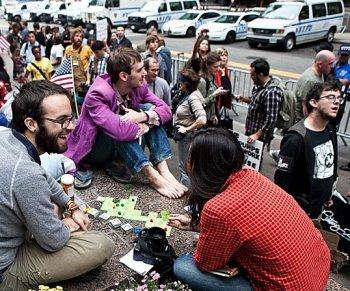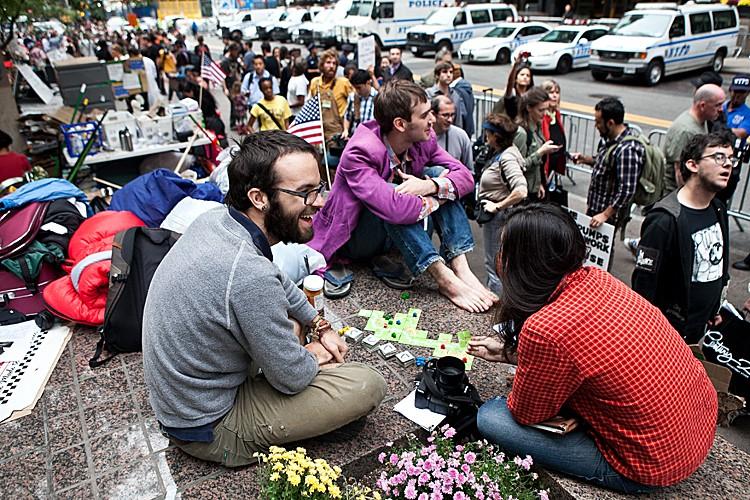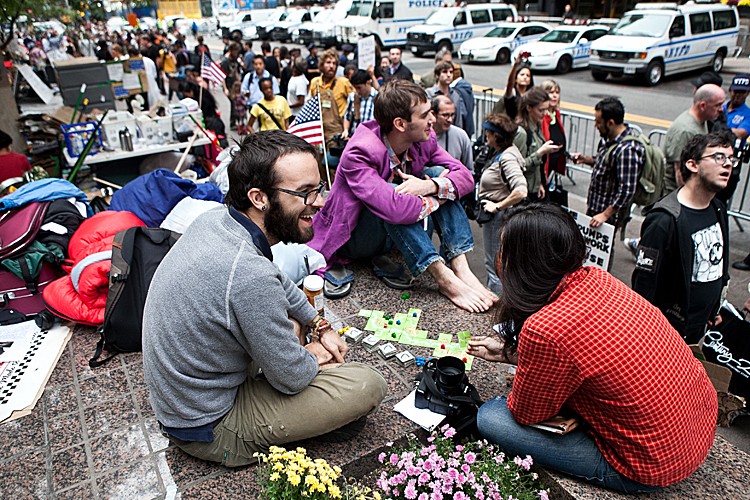News Analysis
The Occupy Wall Street (OWS) protest movement that originated Sept. 17 in Manhattan’s Liberty Park (also known as Zuccotti Park) has quickly spread around the country.
Occupy(insert name of city here) sites have popped up overnight around the Internet, reflecting the branches of a coordinated movement. The crowds range from less than a hundred to tens of thousands, in Manhattan and in Boston’s Dewey Park.
“We will be in a thousand cities in this country by the end of the month—hundreds of cities in other countries. We will see General Assemblies on six continents,” boasted a posting on occupywallst.org.
The site also describes the movement as a “leaderless resistance movement with people of many colors, genders, and political persuasions” that uses “the revolutionary Arab Spring tactic to achieve our ends.”
Some media reports have gone further and suggested OWS is America’s Arab Spring—the series of mass protests in the Middle East aimed at toppling tyrannical and often brutal governments.
The majority of protesters express concerns about the continued decline of the U.S. economy, and its impact on workers and their families—concerns shared by the majority of Americans.
Evident in media reports, photographs, and videos of the protests is the theme of distrust of corporate power and wealth, its impact on the economy and unemployment, and influence on government.
Leftist themes are prevalent: representing the oppressed and downtrodden, the language of class distinctions, and a call for taxing and targeting the wealthy.
“We are getting nothing while the other 1 percent is getting everything. We are the 99 percent,” states the homepage of the trending blog wearethe99percent.tumblr.com.
“We Are the 99 Percent” has become the slogan of Occupy Wall Street.
Resistance to monopoly and distrust of the financial sector—and the federal government—is sewn in the fabric of American history.
One OWS protester carried a sign that paraphrased auto industry pioneer Henry Ford, who said, “It is well enough that people of the nation do not understand our banking and monetary system, for if they did, I believe there would be a revolution before tomorrow morning.”
Media reports have related the Wall St. movement to the conservative Tea Party movement, which emerged in 2009 and subsequently impacted the midterm elections of 2010.
Vice President Joe Biden echoed this sentiment in an Oct. 6 interview by David Gregory at the Ideas Forum in D.C. “Look, there’s a lot in common with the Tea Party,” Biden said. “The Tea Party started, why? TARP. They thought it was unfair.”
On this point, Amy Kremer of the Tea Party Express agrees. “You know, I understand why they’re out there,“ Kremer said, on the radio talk show “The Takeaway.” ”I understand why they’re mad at Wall Street—that the banks were bailed out.”
Socialism Over Capitalism
But the similarities with the Tea Party end there. “They want to take from the wealthy and do a redistribution of wealth. But I’m sorry; we don’t support that. That’s socialism,” Kremer said.
While the Tea Party attempts to reassert populist control over the republic using the country’s founding documents and governmental framework, the Occupy Wall St. movement espouses fundamental changes to the form of government. OWS appears to want a do-over.
Slovenian philosopher and radical leftist Slavoj Zizek gave a speech to a crowd in Liberty Park on Sunday.
In a meeting style that has rapidly become a trademark of OWS, the crowd en masse repeated lines of Zizek’s speech as he spoke. “There is a long road ahead, and soon we will have to address the truly difficult questions—questions not about what we do not want, but about what we do want,” Zizek said. “What social organization can replace the existing capitalism? What type of new leaders do we need?”
“We’re a country founded, from an economic system point of view, on free-market capitalism,” said Mark Meckler of the Tea Party Patriots, in an Oct. 10 Washington Times interview. “These folks are intensely offended by free-market capitalism.”
Conservative blogger and chairman of Accuracy in Media (AIM) Don Irvine described the anti-establishment OWS movement as “more reminiscent [of] the 1960s anti-war movement than the Tea Party.”
A participant at Washington, D.C.’s OWS Freedom Plaza demonstration saw common goals between the two movements. “There is always overlap because there are things people all agree on,” said 41-year-old David Swanson, in a recent Washington Times article, adding that the Tea Party is “not under the umbrella of the Republican Party” but is instead “pushing the government in a direction they want.”
Swanson described a similar role for the leftist movement, in relation to the Democratic Party.
Occupy Wall Street, in its initial form, is a melting pot of ideas and causes taken to the streets by disgruntled young Americans, attracted to leftist secularism and its ideals in governance and society.
The participants, while passionate, have been mostly free of violence in their protests, exhibit kindness and concern toward each other, and a desire for change strong enough to take to the streets and exercise their First Amendment right to peaceably assemble.
But whether it is youthful naivete or lack of understanding, the group also calls for “real democracy” in the United States, and throughout the world.
This in itself is at odds with the U.S. form of government—a representative republic, set up to protect citizens from the strong winds of populist fervor, and by design to give voice to the minority.
Benjamin Franklin noted the distinction over 200 years ago, “Democracy is two wolves and a lamb voting on what to have for lunch. Liberty is a well-armed lamb contesting the vote.”
Popular movements are typically in their purest form at the beginning and then become co-opted by others, with other agendas. Labor unions have joined some protests—15 unions joined a mass demonstration in Manhattan on Oct. 5.
Accusations of “astroturfing”—politicians manufacturing a seemingly popular response—have been made. Conservatives have raised the question of whether some protesters are being paid, citing a recent New York City craigslist ad placed by the Working Families Party that appears to offer to pay individuals for taking part in OWS.
Despite the claims of an American Arab Spring spreading throughout the country, the question is whether the movement can sustain momentum, and play a real role in shaping governance and popular culture in the future. It remains to be seen whether the ideas behind Occupy Wall Street truly represent the 99 percent.







Friends Read Free